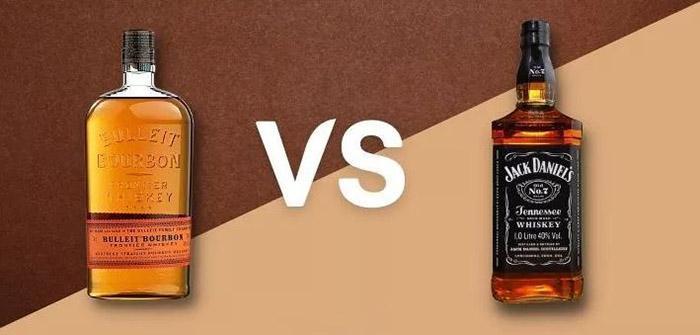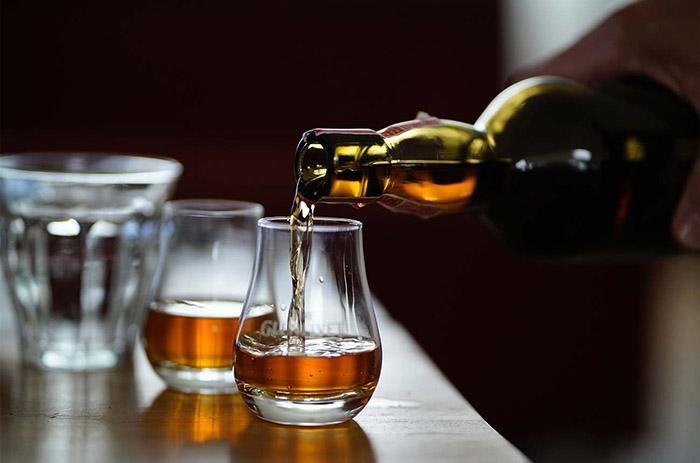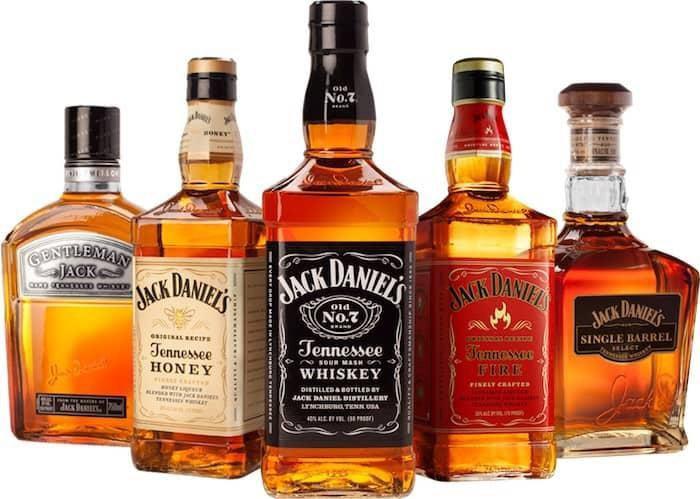Are you bewildered by the difference between whiskey and bourbon?
It’s a common conundrum given that bourbon falls into the whiskey category, adding a layer of complexity to this spirited debate.
You Are Watching: Whiskey Vs Bourbon Updated 07/2025
This article will decipher these intricacies, providing clear definitions, drawing comparisons, and illuminating unique characteristics of each liquor.
Are you ready to become an alcohol aficionado? Let’s dive in!
Understanding the Difference Between Whiskey and Bourbon

Bourbon is made with at least 51% corn
In the world of distilled spirits, two key players emerge as favorites – whiskey and bourbon. But what sets them apart?
One significant factor that distinguishes bourbon from other types of whiskey is its mash bill or grain composition.
By law, to be classified as bourbon, it must contain a minimum of 51% corn in its ingredient mix.
This isn’t just an arbitrary number but a requirement set by American liquor regulations, which lends to bourbon’s distinctive sweet flavor that has won over many enthusiasts worldwide.
On top of this, the high concentration of corn gives bourbon a unique texture compared to other whiskeys marked by grainier and sharper mouthfeel due to their varied grain constituents like rye or barley.
So next time you sip on that golden liquid, savor not only its smooth taste but also the craftsmanship behind it – know you’re enjoying something uniquely American!
Bourbon is always aged in new charred oak barrels
One key characteristic of bourbon that sets it apart from other types of whiskey is that it must always be aged in new charred oak barrels.
Unlike other whiskies, such as Scotch or Irish whiskey, which often use used barrels for aging, bourbon requires the distinct flavors and aromas imparted by new oak.
This means that every time a batch of bourbon is made, new barrels are needed to meet this requirement.
The aging process in these fresh charred oak barrels plays a crucial role in developing the unique qualities of bourbon.
As the liquid interacts with the wood, it takes on rich flavors like vanilla and caramel, while also gaining depth and complexity from the charring process.
The new wood allows for greater extraction of desirable compounds from the barrel, resulting in a smoother and more rounded mouthfeel.
Bourbon has to hit certain ABV marks
Bourbon, America’s native spirit, must adhere to specific alcohol by volume (ABV) requirements. In order to be legally called bourbon, the spirit must have an ABV of no less than 40%.
This regulation ensures that bourbon maintains its distinctive flavor profile and smoothness that whiskey enthusiasts love.
Read More : Whats A Whiskey Dram Updated 07/2025
So, whether you’re sipping it straight or using it as the base for a delicious cocktail, you can trust that your bourbon will always hit the mark in terms of ABV.
Bourbon doesn’t need to come from Kentucky
Many people associate bourbon with the state of Kentucky, and for good reason. While it’s true that bourbon doesn’t need to come from Kentucky, a majority of it is indeed produced there. In fact, about 95% of all bourbon in the world is made in Kentucky.
The state has a long-standing tradition of distilling this beloved American spirit, which is why it has become synonymous with bourbon production.
That being said, bourbon can be made anywhere in the United States as long as it meets certain criteria.
One important requirement is that the whiskey must be made from a mash bill containing at least 51% corn.
Additionally, it needs to be aged in new charred oak barrels and have a specific alcohol by volume (ABV) percentage when entering the barrel for aging.
While other states may produce their own versions of bourbon, many enthusiasts believe that Kentucky still produces some of the best bourbons on the market due to its ideal climate and limestone-rich water sources.
So while you can find delicious bourbons outside of Kentucky, there’s something truly special about sipping on a genuine Kentucky bourbon that embodies both tradition and craftsmanship.
Remember though, no matter where your favorite bottle comes from—be it Kentucky or another state—it’s important to appreciate and enjoy them responsibly.
Characteristics of Whiskey

Types of whiskey
Whiskey comes in many different varieties, each with its own unique characteristics and flavors.
Let’s explore some of the most popular types of whiskey:
- Rye Whiskey: Made primarily from rye grain, this type of whiskey has a distinct spicy bite and is known for its complex flavor profile.
- Scotch Whisky: Produced in Scotland, Scotch whisky is made from malted barley and aged in oak barrels. It has a smoky flavor and is often enjoyed straight or on the rocks.
- Irish Whiskey: Known for its smoothness, Irish whiskey is typically triple distilled and made from a mix of malted and unmalted barley. It offers a lighter, more delicate taste compared to other whiskies.
- Japanese Whisky: Inspired by the Scottish tradition, Japanese whisky has gained international recognition for its excellent craftsmanship. It can vary in style but is often characterized by its balance of fruity and peaty notes.
Single-malt vs. blended whiskies
Single-malt and blended whiskies are two distinct categories within the wide world of whiskey. Single-malt is a type of whisky made from malted barley and produced by a single distillery.
It offers unique flavors and aromas, showcasing the characteristics of that particular distillery’s production methods.
On the other hand, blended whiskies are a combination of different whiskies sourced from multiple distilleries.
Blended whiskies aim to create a balanced flavor profile by blending various grain and malt whiskies together.
This process allows for greater versatility in terms of taste and consistency.
Both single-malt and blended whiskies have their own merits based on personal preferences.
Single malts often exhibit complex flavors with notes of vanilla, fruits, spices, or even smokiness depending on the region they come from (think Scotch).
Read More : What Is Rumchata Updated 07/2025
On the other hand, blended whiskies tend to be more approachable, offering smoothness and accessibility that appeals to many whiskey drinkers.
Characteristics of Bourbon

What makes a whiskey bourbon?
Bourbon is a unique type of whiskey that has distinct characteristics setting it apart from other varieties. To be classified as bourbon, a whiskey must meet certain requirements.
First and foremost, it must be made primarily from corn, with at least 51% of the grain bill consisting of this ingredient.
Additionally, bourbon must be aged in new charred oak barrels, which imparts a rich flavor profile to the spirit. The aging process is crucial for developing the smoothness and complexity that bourbon is known for.
Unlike some other types of whiskey, Bourbon does not have any specified minimum aging period but requires aging until its maturity.
This carefully crafted process results in a sweeter taste compared to other whiskies, with hints of vanilla and caramel notes amongst others.
Tennessee whiskey
Tennessee whiskey is a type of bourbon that undergoes an additional step known as the Lincoln County Process. This process involves filtering the whiskey through charcoal before it is aged in oak barrels, giving it a distinct and smooth flavor profile.
The most famous example of Tennessee whiskey is Jack Daniel’s, which owes its unique taste to this extra filtration process.
It’s important to note that all Tennessee whiskeys are bourbons, but not all bourbons are Tennessee whiskeys.
So if you’re looking for a bourbon with a little something extra, give Tennessee whiskey a try. Cheers!
Canadian whisky
Canadian whisky, often referred to as rye whisky, is another type of whiskey that has gained popularity in recent years.
It is known for its smooth and light flavor profile, making it a great choice for those who are new to whiskey or prefer a milder taste.
Canadian whisky is typically made from a blend of grains, including corn, wheat, barley, and rye. The use of rye gives it a slightly spicy bite that sets it apart from other types of whiskey.
While bourbon must be aged in new charred oak barrels, Canadian whisky can be aged in either old Bourbon barrels or used American oak barrels.
This aging process adds depth and complexity to the final product.
Bourbon vs. whiskey
As an alcohol enthusiast, it’s important to understand the difference between bourbon and whiskey, particularly their taste profiles, ingredients, and production processes. Here’s a comparison in table format:
| Bourbon | Whiskey | |
|---|---|---|
| Origin | Bourbon is America’s only native spirit. | Whiskey is a globally produced spirit with different variations such as Scotch, Irish, and Japanese whiskey. |
| Primary Ingredient | Bourbon must be made with at least 51% corn, contributing to its distinct sweetness. | Whiskey is a distilled spirit made from various grains including corn, barley, rye, and wheat. The grain choice can significantly affect the flavor. |
| Taste | Bourbon typically has a sweeter taste due to its high corn content and the use of new charred oak barrels for aging. | Whiskey has a sharper, grainier mouthfeel, which can vary greatly depending on the type and blend of grains used in production. |
| Aging Process | Bourbon is always aged in new charred oak barrels, a requirement for it to be legally called bourbon. | Whiskeys can be aged in various types of barrels, and not necessarily new ones, giving a broad spectrum of flavors. |
| Trivia | A former slave named Jack taught Jack Daniel, a famous bourbon producer, how to make whiskey. | Raw, unaged whiskey is referred to as White Dog. |
Conclusion
In conclusion, while whiskey and bourbon may share many similarities, their subtle differences make each a unique and worthwhile beverage.
Bourbon’s sweeter flavor and smoothness set it apart, while the variety of flavors found in different types of whiskey offer a wide range of options for enthusiasts.
Ultimately, whether you prefer the sweet allure of bourbon or the bold character of whiskey, both are sure to satisfy any discerning palate. Cheers!
Sources: https://chesbrewco.com
Category: Wine










